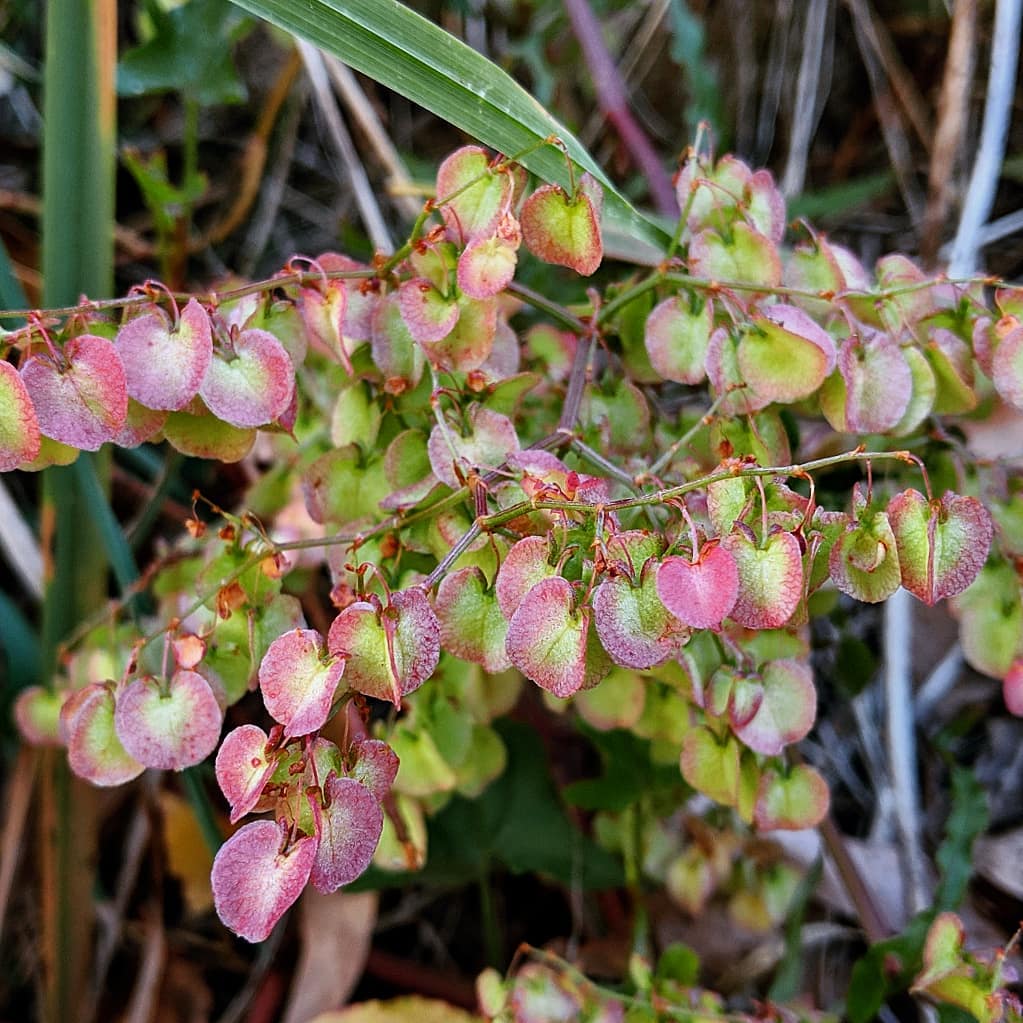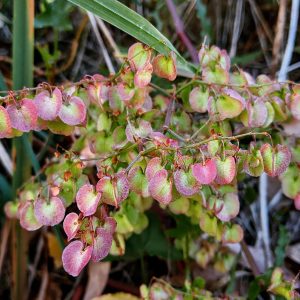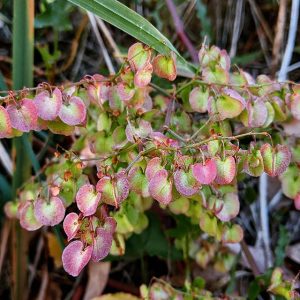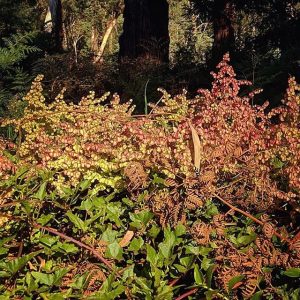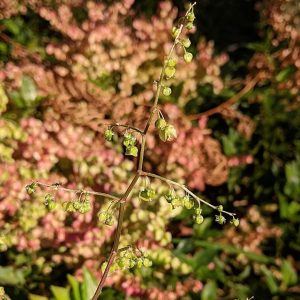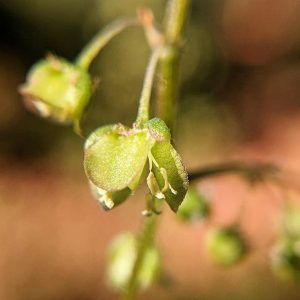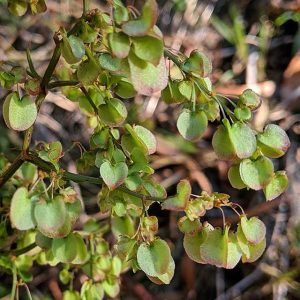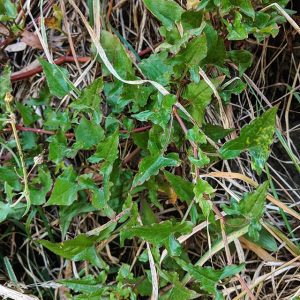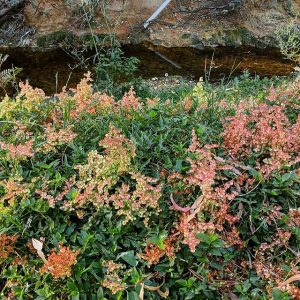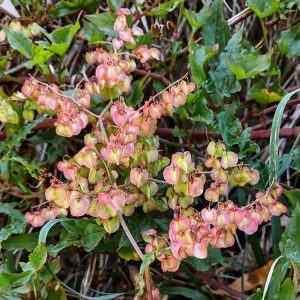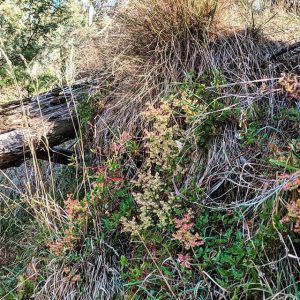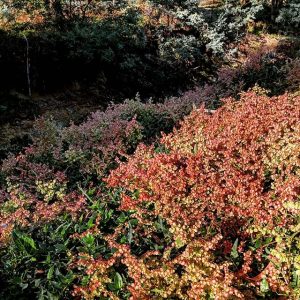Rambling Dock (Acetosa sagittata), a long-lived perennial creeper from Southern Africa, naturalised in Australia and NZ.
Rambling Dock was recorded in NSW from 1896, where presumably it had been cultivated as an ornamental and an occasional cooked green akin to the European herb Rumex acetosa, a close relative. International authorities have not recognised the species’ Australian-authored placement into the genus Acetosa, and treat it as Rumex sagittatus.
In Victoria, the species was also cultivated, principally for the bright autumn colour of its ripening seeds. From 1911-1945, collections appear to have been made from cultivated plants, although a 1926 record, from ‘Foley’s Paddock, near Mornington on stony land’, may perhaps refer to naturalised specimens. The species is also referenced in a 1929 Myra Morris poem, ‘Autumn Morning—Frankston’; the poet recorded the way its ‘rosy bunches weaves / tangles of stems among the bushy things’, namely the wild geranium, sombre banksias and brambles seen along the way to the beach (The Bulletin v50 no2577).
It is apparent that the species was naturalising elsewhere in Victoria, although plants from those locales went unrecorded in public collections. Per a 1944 columnist in the Portland Guardian: ‘My first experience with this dock (remarkable within the genus) was on our flat, where it probably came with carrot seed. Then I discovered a small colony along Surrey River, in the heart of the Gorae forest, specimens climbing to six feet on other plants… but it was not until my visit to Darlot’s Creek did I see flowering plants… it was quite plentiful along one stretch, clinging to chiefly bulrushes and the tall spike rush.’
Naturalised plants were collected in 1963, ‘scrambling over cliff vegetation’ at Ricketts Point, then in East Gippsland locales in the 1970s and elsewhere on Mornington, and spreading to non-coastal parts of the metropolitan by 1978 when Rambling Dock was first collected on Mullum Mullum Creek. The photographed plants were found in April on Mullum Mullum, an infestation now at least forty years old.
View Original Post on Instagram
Search for information about Acetosa sagittata in the Flora of Victoria
View information and occurrences of Acetosa sagittata on the Atlas of Living Australia
